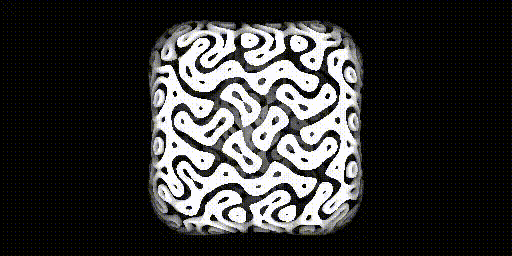I've made this article out of my twitter thread https://twitter.com/i_dianov/status/1367136469853351944
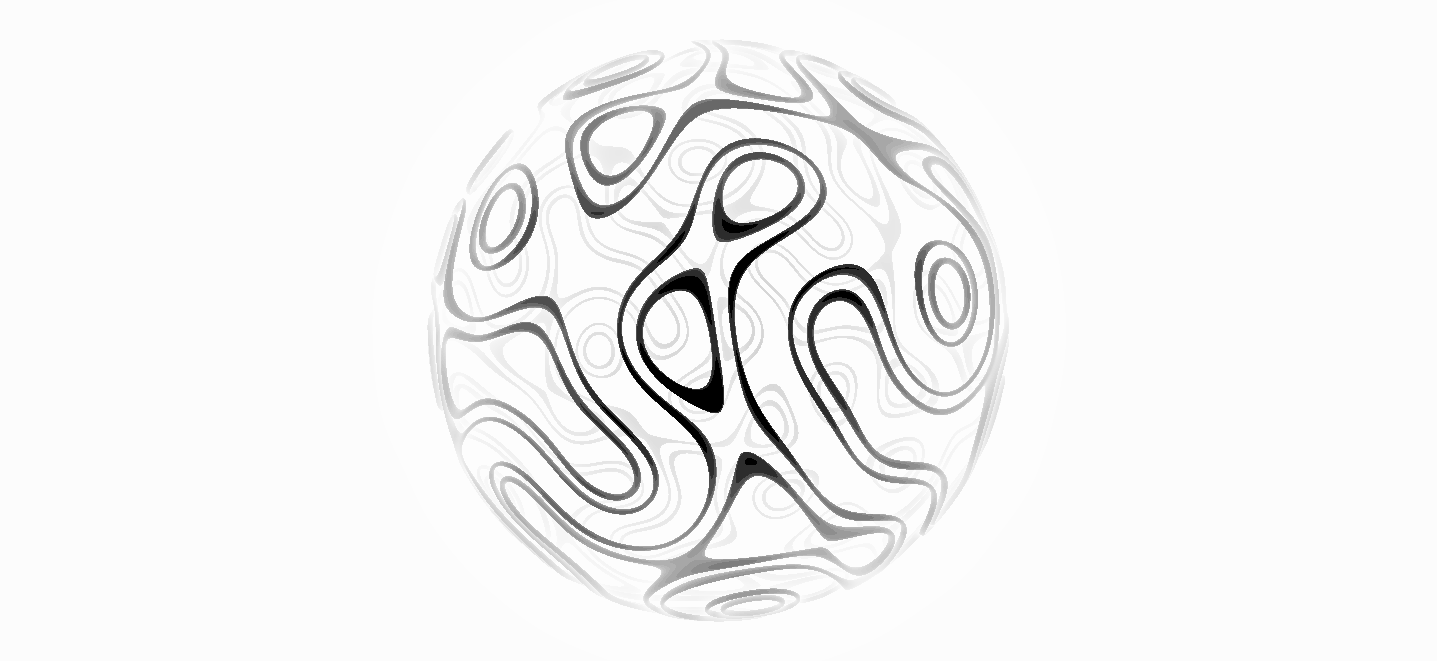 Intersection of sphere with intersaction of gyroid and sphere
Intersection of sphere with intersaction of gyroid and sphere
Hey! This is a tutorial thread on how to find the intersection of two or more surfaces (not volumes) to make complicated #SDF shapes you can use for #raymarching.
- Let's start with a basic raymarching setup
#define SPHERE length(p)-1.
#define SDF(p) SPHERE
vec3 p; float d=0.,i,e=1.; for(;i++<99.&&e>.01; p=d*normalize(vec3((FC.xy-.5*r)/r.y,1))+ vec3(0,0,-5), p*=rotate3D(t,vec3(.3,1,0)), d+=e=.5*SDF(p)); o+=100./i/i;
You don't need to understand the bottom line, let's just focus on the line starting with
#define SDF(p) …
It defines the shape to render. Here's a sphere:
#define SPHERE length(p)-1.
#define SDF(p) SPHERE

- And here's an SDF for a plane Z (it's parallel to X- and Y-axis) https://bit.ly/3e4nd1D
#define PLANE_Z -p.z
#define SDF(p) PLANE_Z

- To find the intersection of these two surfaces we just do
#define SDF(p) length(vec2(PLANE_Z, SPHERE))
And BOOM!💥 The circle is here! https://bit.ly/3bXGTBJ
The thing is that length of two SDFs is close to zero only if both SDFs are close to zero.
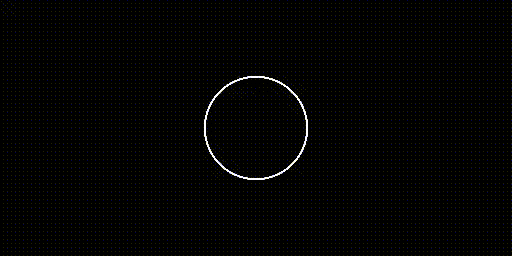
- We can inflate this surface by subtracting a small value from the SDF:
#define SDF(p) length(vec2(PLANE_Z, SPHERE))-.2
Please, pay attention to terminal -.2 in the formula.
https://bit.ly/3bXGTBJ
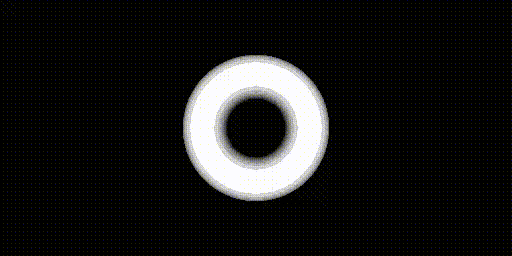
- Can you make a short break to think about how to make a cylinder using this trick?
- Great, you did it! It's just an intersection of two planes inflated by subtracting a small value:
#define SDF(p) length(vec2(PLANE_X, PLANE_Z))-1.2
They often shorten this to just length(p.xz)-1.2 which is effectively the same.
https://bit.ly/30me4cZ
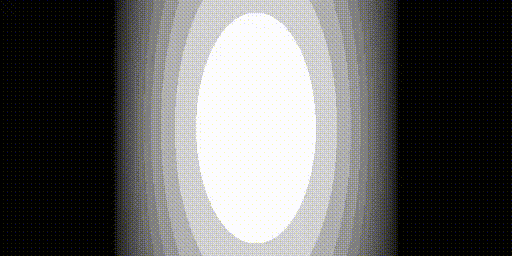
- Let's intersect cylinders! It will result in two crossing circles
#define CYLINDER_Y length(vec2(PLANE_X, PLANE_Z))-1.2
#define CYLINDER_X length(vec2(PLANE_Y, PLANE_Z))-1.2
SPHERE))-.01
#define SDF(p) length(vec2(CYLINDER_Y, CYLINDER_X))-.1
https://bit.ly/3883WbT
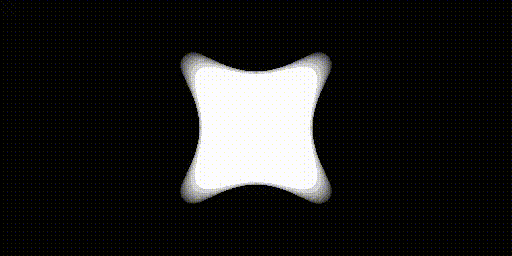
- The crazy stuff begins! Beware gyroid
#define GYROID dot(sin(p*9.),cos(p.zxy*9.))*.1
#define SDF(p) GYROID
It is not easy to understand its shape because gyroid is borderless and we are inside https://bit.ly/3070hqe

- To understand its shape better we have to intersect it with some other primitive. Why not a sphere?
#define SDF(p) length(vec2(SPHERE, GYROID))-.02
https://bit.ly/30a2scU
You can learn more about gyroids on https://en.wikipedia.org/wiki/Gyroid
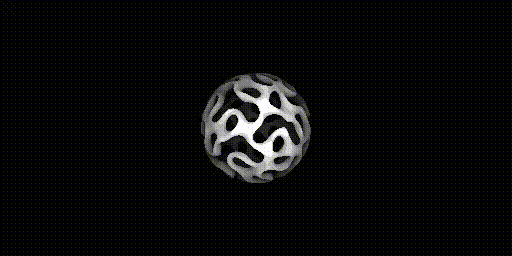
- You want to intersect intersections? No problem! We can use our weird shape from twit #7 for that:
#define CROSS_RINGS length(vec2(CYLINDER_Y, CYLINDER_X))-.2
#define SDF(p) length(vec2(CROSS_RINGS, GYROID))-.01
https://bit.ly/3kGYWjr
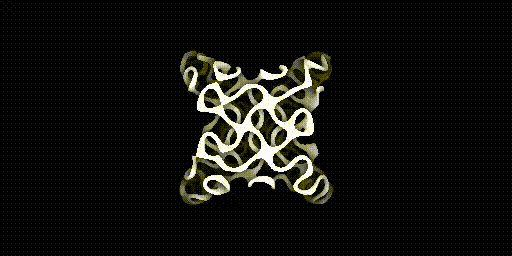
- You can intersect more than two surfaces at once! Use vec3 or vec4 for that:
#define SDF(p) length(vec3(CYLINDER_Y, CYLINDER_X, SPHERE))-.1
https://bit.ly/3uT3ZSu
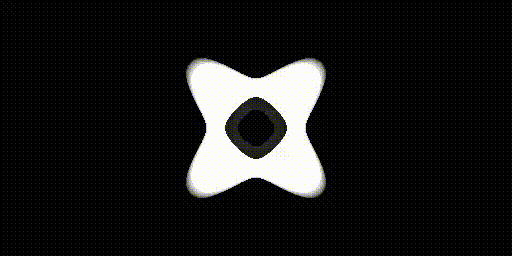
- Aaaaannndddd… the regular sphere SDF is a shortcut of the very same formula!
#define SDF(p) length(vec3(PLANE_X, PLANE_Y, PLANE_Z))-.9
↓
#define SDF(p) length(http://p.xyz)-.9
↓
#define SDF(p) length(p)-.9
I was shocked to learn about it! 🤯
- That's it! Try playing with the code, interesting patterns can suddenly appear https://bit.ly/3uSmvdO
It's my first tutorial thread. I would be grateful if you could share your thoughts on the subject, ask questions or brag about the SDFs you discover.
